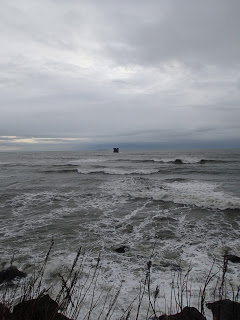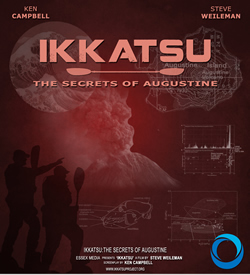“It is easy to make plans in this world; even a cat can do it; and when one is out in those remote oceans it is noticeable that a cat’s plans and a man’s are worth about the same.”
Mark Twain
Following the Equator
I could go into a long and detailed story about my trip to the coast this past weekend. I could describe the weather (inclement), the water (malevolent) and my own judgement (or lack thereof). It may work just as well, however, to run through a list of lessons learned, both large and small. Good judgement, after all comes from experience, and experience comes from poor judgement.
Lesson 1: When hiking on the Olympic coast, the height of the low tide is every bit as important as the time. I left the warmth of the van at 12:15am in order to get to the rock garden on the shore at the time of low water. There is a maze of stones that has to be negotiated before getting to the start of the coastal trail at Jefferson Cove. While I had timed my trip adequately, I didn’t ask myself whether the low tide would be low enough to make it around some of the headlands between me and the trail. It wasn’t.
Lesson 2: If there is a storm going on (and there was), low tide doesn’t last very long. Also, as something of a corollary to Lesson 1, a storm surge will push the water up to the point that an already inadequately low tide will be even higher than forecast. Which was also the case.
So, let’s recap… the height of the low tide was too high to allow me to get to Jefferson Cove and the duration of the low tide was significantly lessened by the storm surge, which also pushed the water even higher.
Lesson 3: I did not allow enough time for my traversing the rocks. Even if the first two factors had not been as significant as they were, it still took me longer than I’d thought to get through the maze. By the light of a headlamp. In freezing rain. What this meant was that, by the time I’d made it to the last headland before Jefferson Cove, the tide had turned with a vengeance, and there was no way I was getting around. So I made the decision to turn back. It was about 2:25am.
The tide was faster than I was, is what happened. I made it most of the way back to the Hoh, but there came a point when I could go neither forward nor back, and I made the decision to go up and hunker down. The cliff section above me at that point was a 45-degree angle of mud and slick grasses, part of a slide that had happened sometime in the past. Footing and handholds were few and precarious, but eventually, through a combination of dogged profanities and dumb luck, I found a spot that was relatively secure, about the size of my butt. As the tide continued to rise, this perch became my home. It was 3:15am.
I spent the next 10 hours in that spot, gradually making improvements. I constructed a place for my feet, kicked into the mud, flattened the seat area and sculpted it to fit the thermarest pad. Below me, about fifty feet down, the waves lashed the shoreline relentlessly, loud enough in the dark, and even more threatening by the light of day. The temperatures were low enough that ice fell at points throughout the night and I saw my breath in clouds around my head the whole time I was there. Which at least provided proof that I was still breathing.
In retrospect, it wasn’t that bad. I learned a lot, so my good judgement should get even better, yes?
Little lessons: Always take plenty of line along. I didn’t. Have a watch, especially when dealing with tidal issues. I didn’t. Clip your toenails before a hike. Wasn’t a major problem, but it would have been smart. I didn’t.
So I never made it to Mosquito Creek. I never saw the dock, which is why I was out there in the first place. (I could have come down from my perch and turned north, rather than south, and I think I could have got there without too much trouble. But, had I done that, I would not have made it home sooner than Christmas Eve, possibly later. That was not acceptable.
So, take what lessons you will from my experience. Overall, in my opinion anyway, it was an education well worth the trip.











